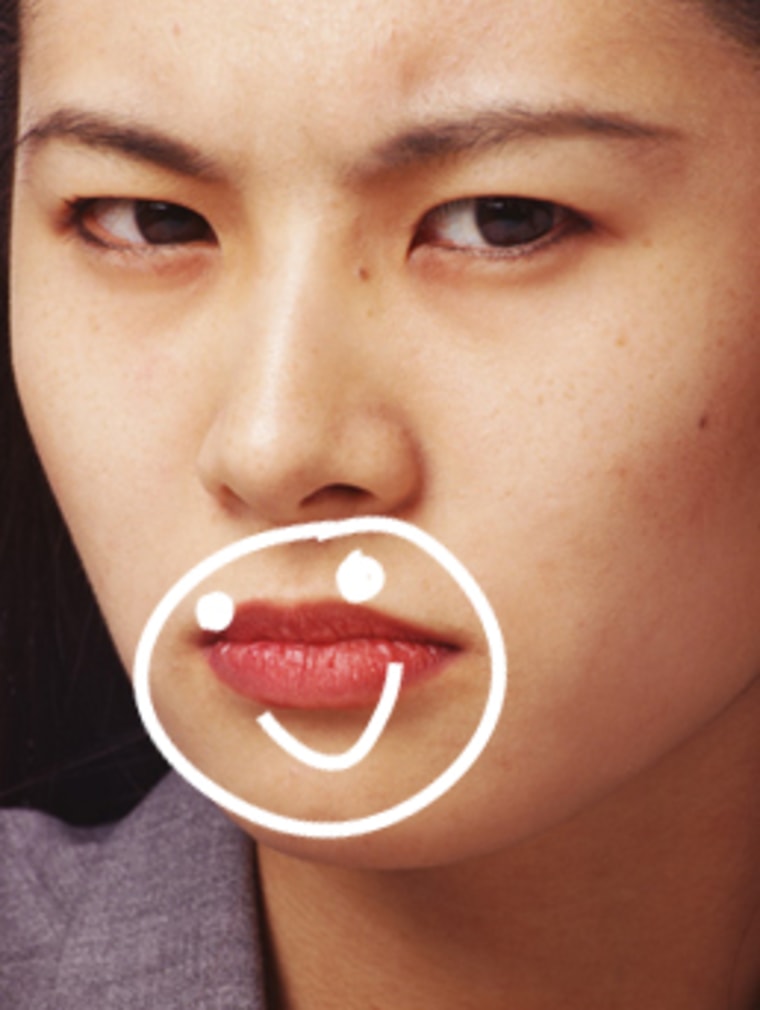We all know that smiling faces sometimes tell lies, even without the Motown song there to remind us. But now there’s proof that those fake smiles may not be worth as much as the genuine article.
In a study conducted at Bangor University in Wales, researchers had 36 undergrads play a game in which they won money from four opponents, each of whom would indicate the participants’ wins by displaying either a genuine or a polite smile. In a later phase of the game, participants chose which opponent they wanted to play.
“The really surprising finding was that they preferred genuinely smiling opponents to politely smiling ones even when the politely smiling ones had a greater chance of paying out,” says psychologist Erin Heerey, lead author of the study. “Our research has found that genuine smiles are worth more to us than polite smiles.”
But how can we tell a real smile from a fake one (unless of course, you’re watching an episode of the Real Housewives)? According to Heerey, it’s all in the eyes – or at least the area around the eyes.
“The key feature differentiating these types of smiles is the presence of so-called ‘laugh lines,’ the tiny wrinkles that appear at the corners of the eye during smiling,” she says. “These are produced by the action of a muscle called the orbicularis oculi, which rings the eye and contracts when people produce genuine, but not polite smiles.”
Differentiating between the two can be difficult, though, says Dr. Paul Ekman, a professor emeritus of UC San Francisco who helped develop the Facial Action Coding System to help scientists distinguish between genuine and fake smiles.
“If it’s a very large smile and the lip corners are pulled up intensely then all of those signs will be produced by either a genuine or a non-genuine smile,” says Ekman, author of numerous books about facial expressions and how they reflect our emotions.
“The only place that will reveal the difference in a broad intense smile is the skin between the eyebrows and the upper eyelid. That will move slightly down in the genuine smile and will not move in the social or false smile. Everybody can voluntarily make their lips smile, but very few people can contract the muscle that surrounds the eyes.”
Seattle photographer Lance Wagner says he thinks there’s one other thing that differentiates a fake smile from a real one.
“When you’re shooting someone you can tell when they’re doing a forced smile,” he says. “The mouth will go up but the eyes don’t tighten up, like when you laugh a little. With a real smile, you’ll see a sparkle in the eyes that you don’t get with a fake smile. You don’t smile with your mouth alone; the whole face is engaged in a real smile.”
Ekman, however, pooh-poohs the eye sparkle.
“It has nothing to do with a twinkle in the eyes,” he says. “It has to do with the skin around the eyes.”
What do you think? Is it the laugh lines? The twinkle? That little fold of skin between the eyebrow and the eyelid?
Want more weird health news? "Like" The Body Odd on Facebook.
